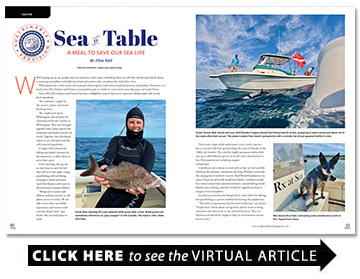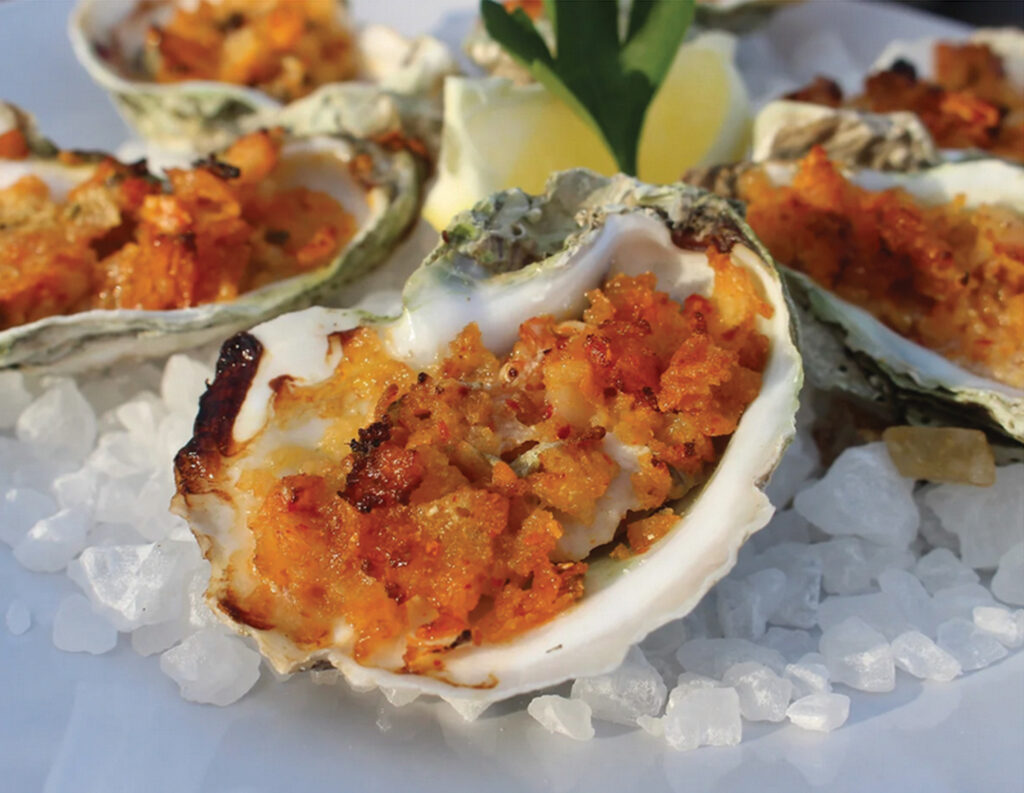Sustainable Provision: Sea to Table
A meal to save our sea life
BY Elyse Kiel
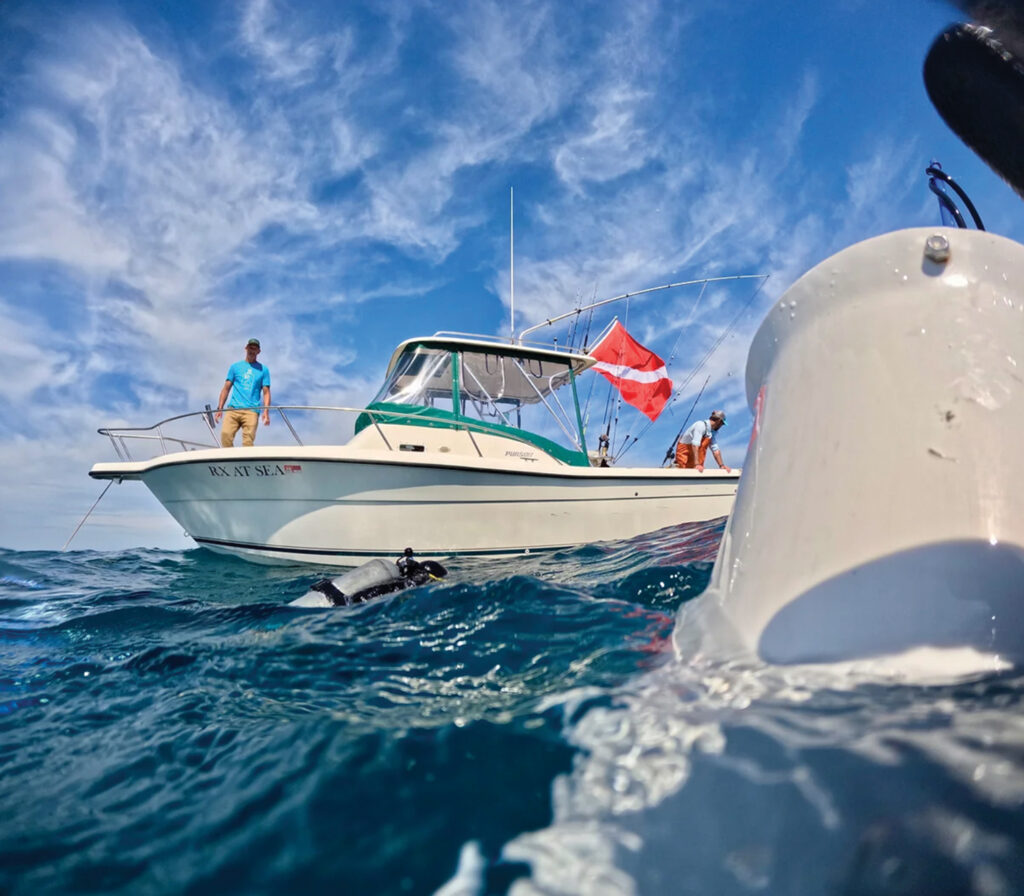
When going out to eat, people want an experience and a story, something they can tell their friends and family about, a stunning atmosphere with delicious food and owners who care about the meals they serve.
Wilmington has a wide variety of restaurants featuring local selections of seafood, protein, and produce. However, it is hard to beat Rx Chicken and Oysters, so named because it is built in a converted corner pharmacy on Castle Street.
Since 2012, Rx Chicken and Oysters has been a delightful surprise that serves innovative dishes made with strictly local ingredients.
The seafood is caught by the owners, James and Sarah Rushing Doss.
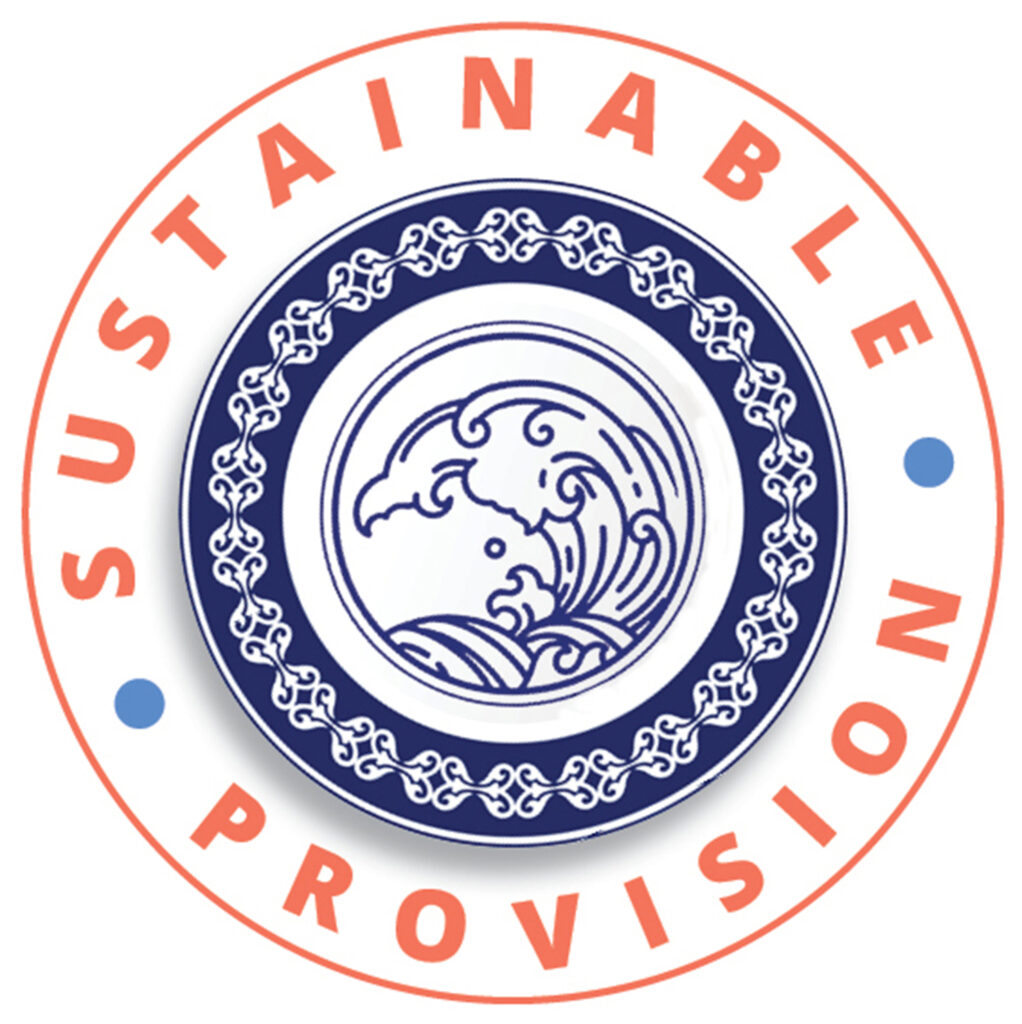
The couple grew up in Wilmington and attended the University of North Carolina at Wilmington. They were brought together when James opened the restaurant and found a partner in Sarah. Together, they developed a plan to use only local and ethically sourced ingredients.
It began with commercial fishing and dealer’s licenses for the restaurant, to allow them to serve their catch.
Every morning, they go out on their boat to catch the fish they will serve that night. Using spearfishing and line-fishing techniques, Sarah and James catch their bounty and return to the restaurant to prepare dinner.
“Being out in nature and offshore without internet or cell phone service is so fun. We are able to have these incredible experiences and return to tell everyone about them,” says Sarah, who married James in 2018.
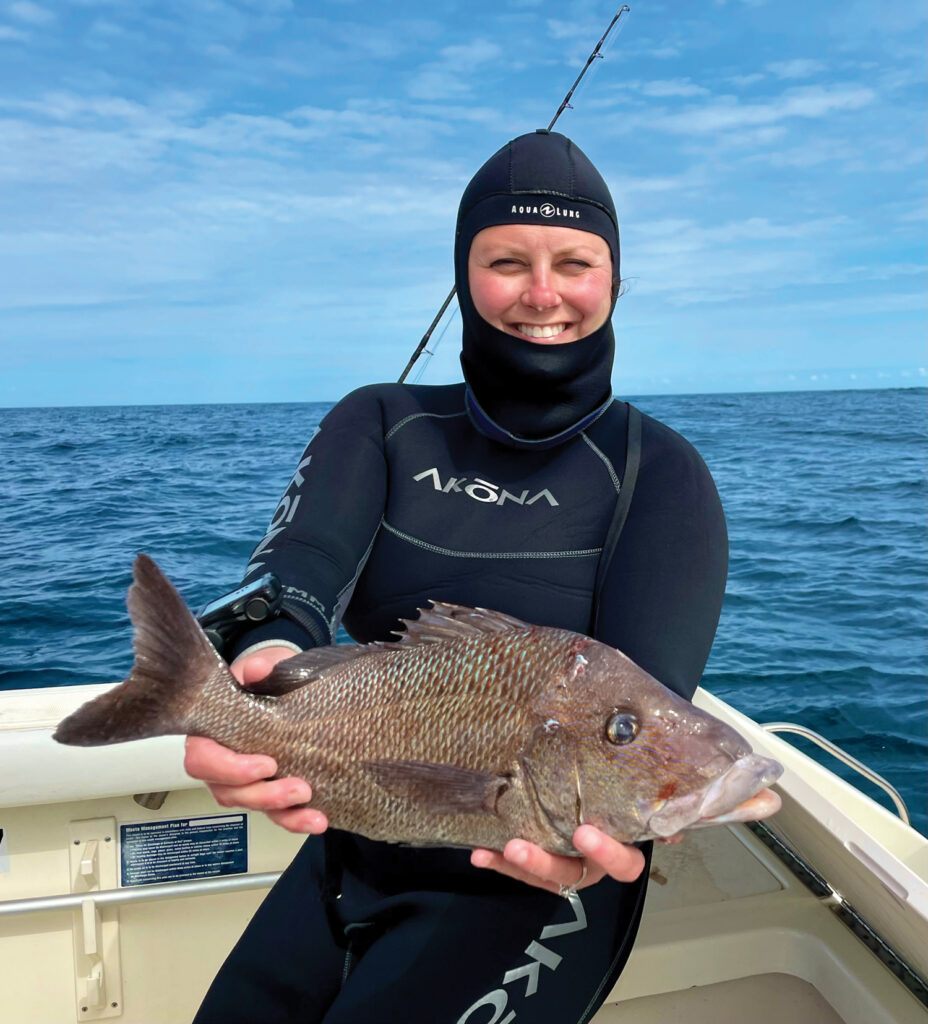
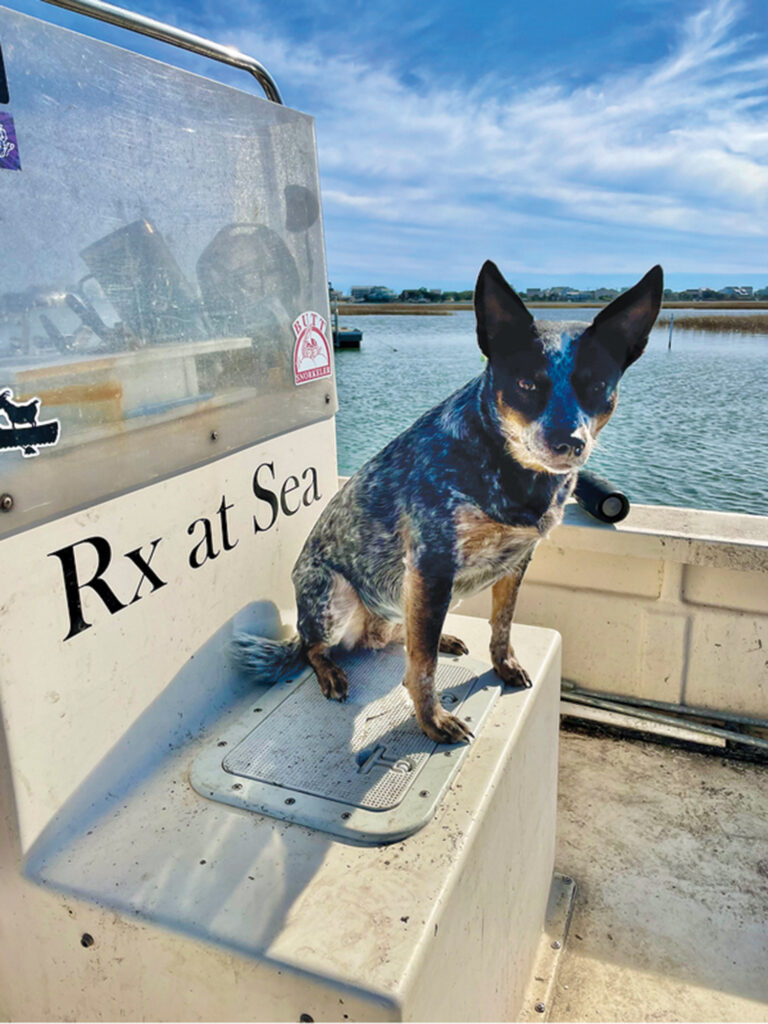
Their main target while underwater is not a native species, but an invasive fish first spotted along the coast of Florida in the 1980s: the lionfish. The colorful, highly poisonous barbed fish eats up to 100 different species of sea life and is detrimental to local fish populations including snapper and grouper.
Lionfish are also a threat to coral reefs as they eat the local fish that keep the saltwater community thriving. Without coral reefs, the consequences would be massive. Reef-World Foundation estimates 25 percent of sea life would lose habitat, coastlines would face more erosion from unrestricted waves, coastal fishing would dissolve into nothing, and there would be a significant drop in oxygen in the atmosphere.
Lionfish are notorious for being hard to catch while line fishing, but spearfishing is a proven method in lowering the populations.
“The barbs are poisonous, but the meat is delicious,” says James. “People don’t think about eating them and we want to bring awareness and education to the seafood business. They are delicious and should be caught to help our environment sustain local sea life.”
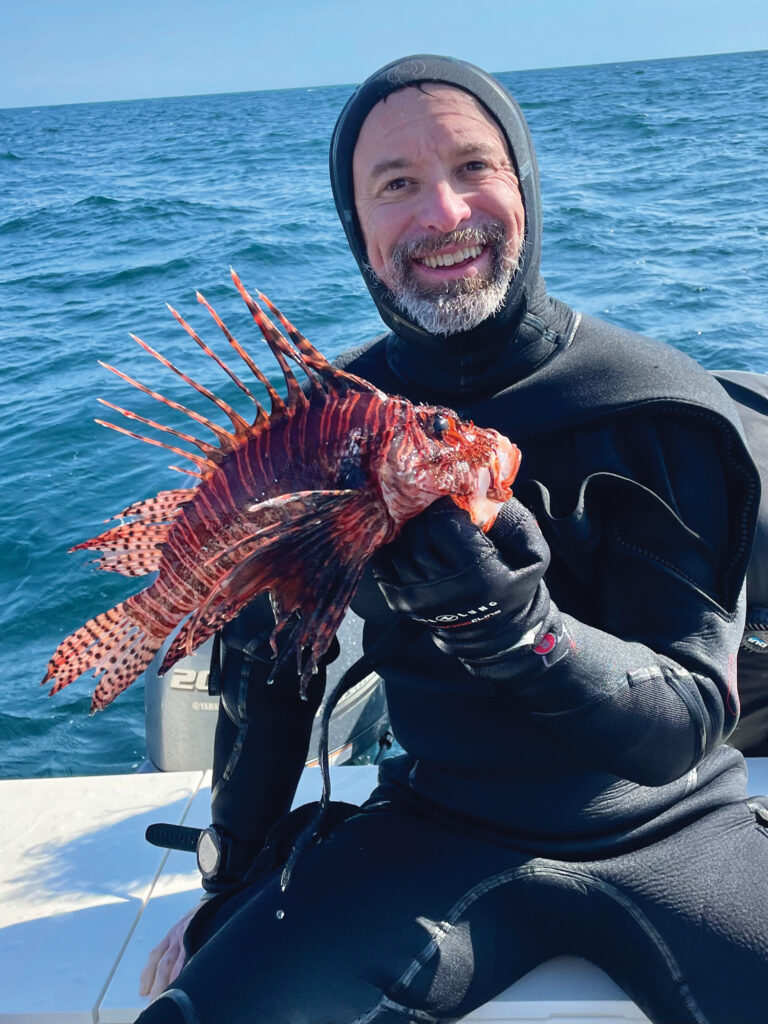
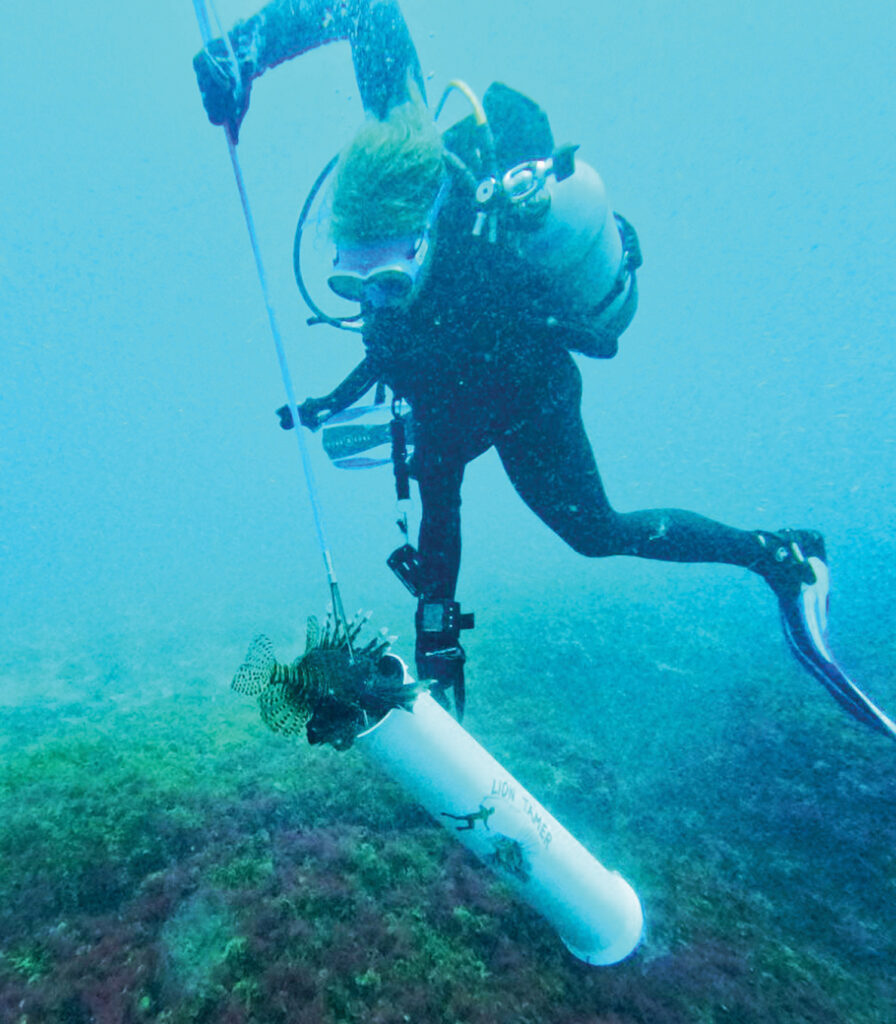
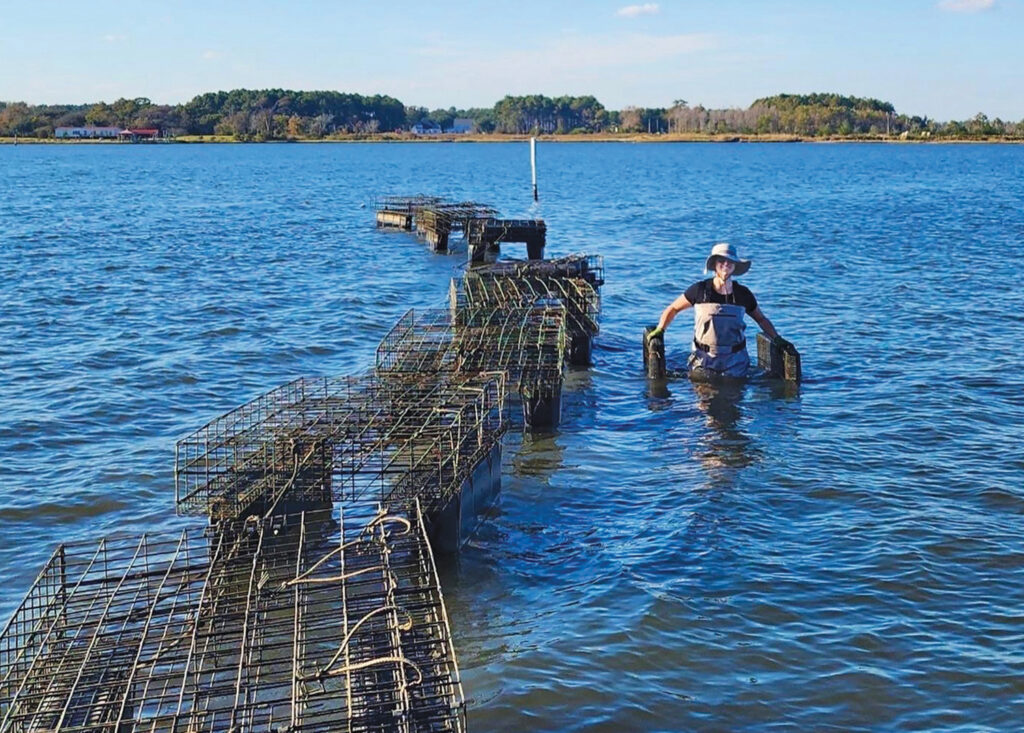
In addition to lionfish, the couple spear and serve grouper, snapper, blue fish, flounder, white grunt, black sea bass, Spanish mackerel, and an occasional hogfish.
“If it tastes good and we catch it, we are going to cook it,” says Sarah. “Our guests are excited about trying fish that are super local and fish they don’t often see served in restaurants.”
The couple also partners with more than a dozen local farmers to source the freshest ingredients that include eggs, poultry, and pasture-raised pork and beef. They refer to their farmers by name, even putting them on the menu next to the featured dishes.
They go on tours to see the farms they will be purchasing from that week, giving them a grateful approach to the resources they serve.
Sarah and James don’t stop their local journey at fish and produce. The pair took up oyster farming in 2021. Their menu in any given night includes oysters from local farms, including their own Lucy Beas grown in Stump and Topsail sounds. The oysters are named after the family dogs, Lucy and Bea.
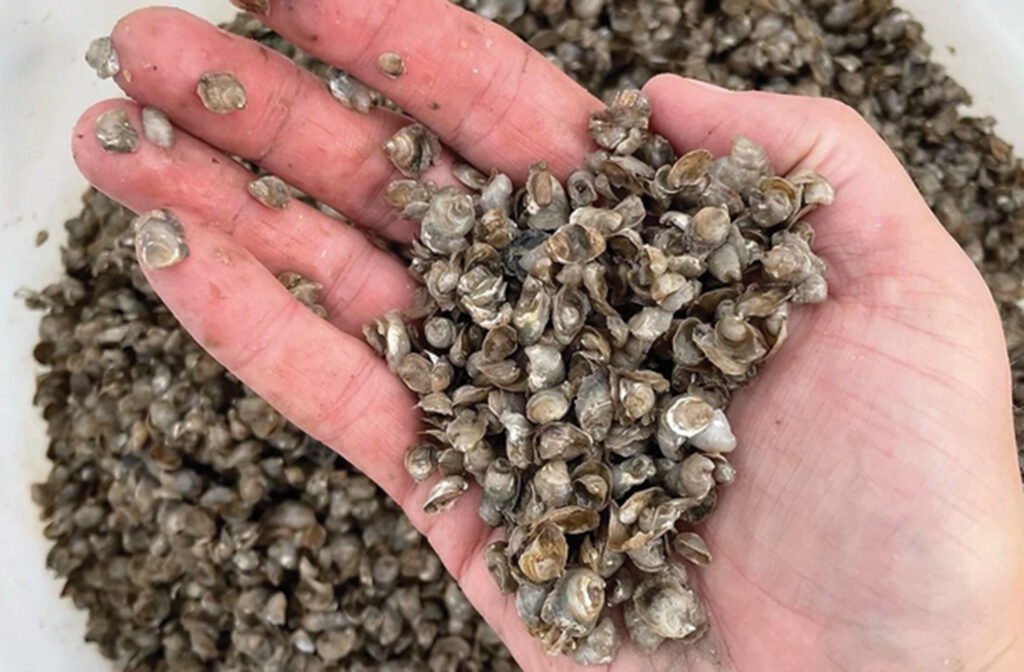
Others may include Waterman’s Choice from Topsail Sound, Big River Selects from Pamlico Sound, Topsail Jewels, Traps Bay, or Three Little Spats providing Permuda oysters from Stump Sound and those of their mentor, Sam Carter from Middle Sound Mariculture.
“We were going out to do a tour of his oyster farm and we ended up loving it,” says Sarah. “By the end of the day we decided to run our own farm.”
They secured a permit and started their farm, using the off-bottom culture method of growing oysters near the surface of the water, which allows them to grow into a smooth and pleasing shape, maximizing the space for the meat to grow.
“The taste is clean and briny,” says James. “The extra flow from the top current helps the oyster taste better than oysters grown in sand or mud.”
Sarah says their oysters almost taste like you are at the beach.
The couple buys baby oysters, the size of a finger- nail, and raises them for a year before they are harvested.
Rx Chicken and Oysters is an experience for diners, who learn about ethically sourced food and how to help the environment with their meal choices.
“Catching lionfish helps our fisheries and growing oysters helps our water quality,” says Sarah. “Eat more lionfish. You have to eat them to beat them.”
ROASTED OYSTERS
Roasted oysters with lacy cornbread crumbles, kimchi, and butter
Recipe courtesy of Rx restaurant’s owner and chef James Doss
LACY CORNBREAD CRUMBLES
- 1 cup finely ground white cornmeal
- 1 ¼ cup water
- Vegetable oil for cooking
*no salt in this recipe if you’re using briny oysters, which we recommend
Thoroughly mix cornmeal and water. Cook on a cast iron skillet over medium high heat. Cook cornbread batter like you would a small pancake. Use one tablespoon of batter per pancake and fry on both sides until lightly golden brown. Allow to cool completely and then crumble by hand or cut with a knife.
VEGETARIAN KIMCHI
Make at home — recipe below — or store bought vegetarian kimchi is fine.
- One head Napa cabbage
- 2-4 carrots
- 2-4 radishes
- Dried red chili to taste
- Salt: 3% of the weight of the vegetables
Mix ingredients and mash down to release the liquid. Allow to ferment 2-4 weeks at room temperature.
ROASTED OYSTERS
This recipe will make about two dozen oysters.
Finely chop vegetarian kimchi (store bought or your own). Mix with equal parts cornbread crumble. Shuck fresh, briny oysters leaving as much of the oyster liquor as possible (rock salt on a baking pan works as a good bed to hold your oysters to prevent them from tipping over).
Evenly top each oyster with the cornbread/kimchi mixture and top each oyster with ½ teaspoon of butter. Bake at 400 degrees until lightly golden brown (generally around 5 minutes). Serve roasted oysters garnished with a lemon wedge.
